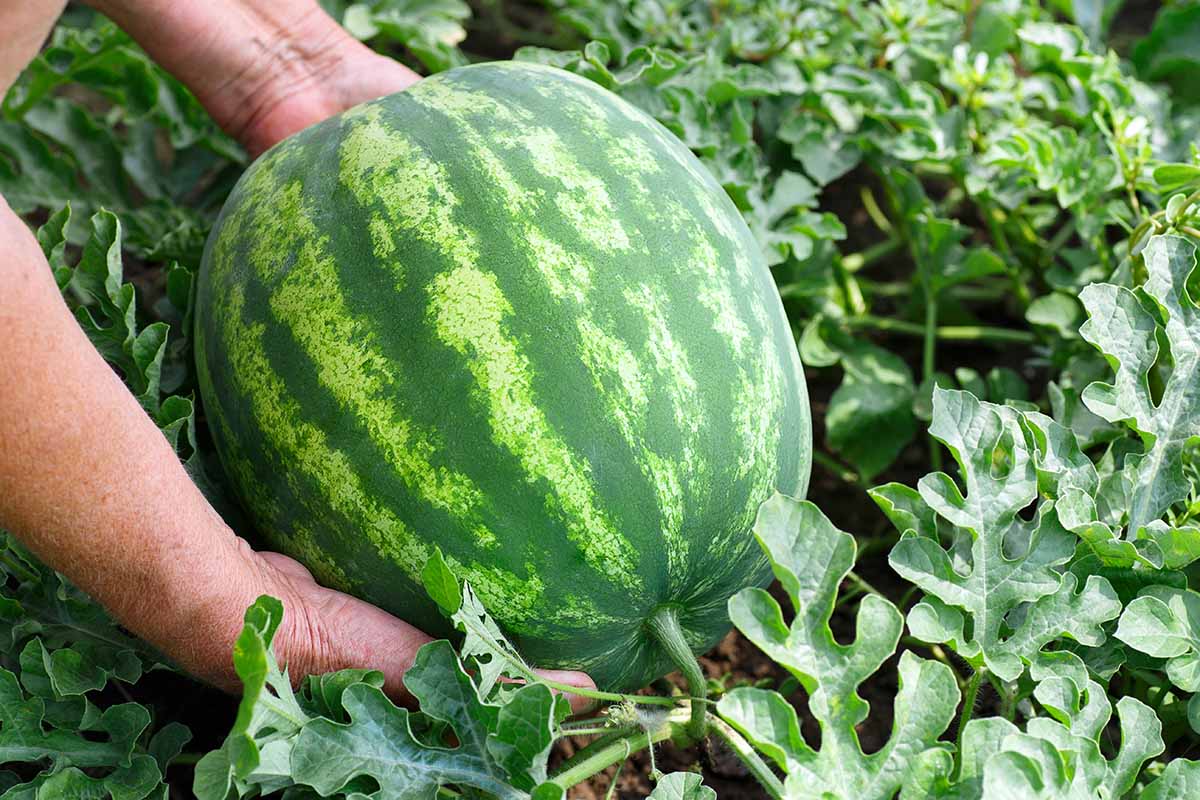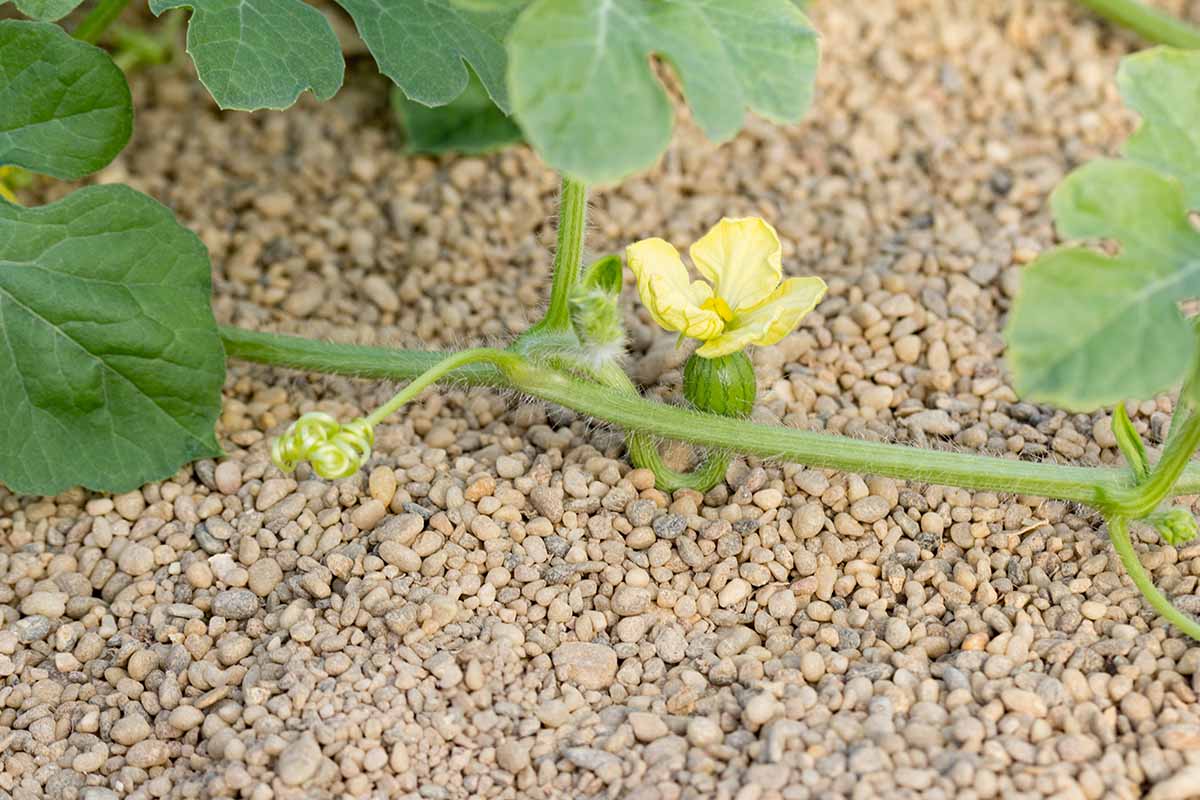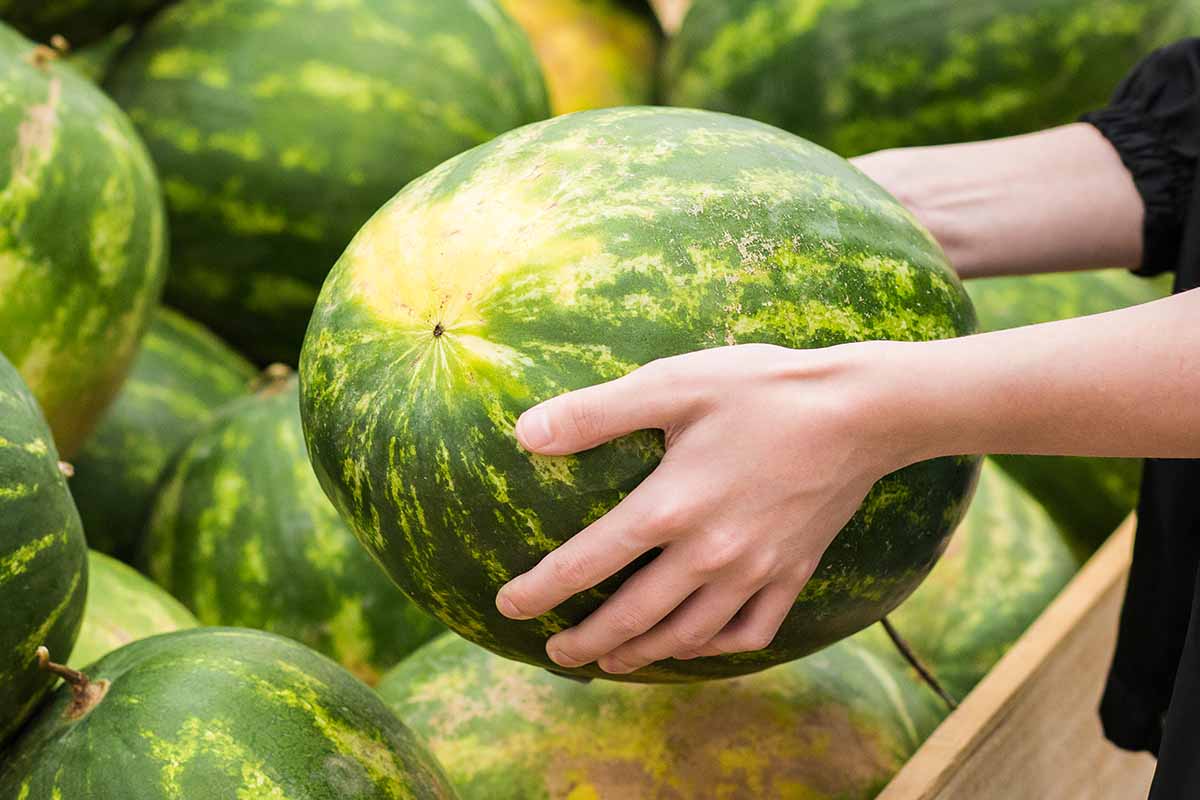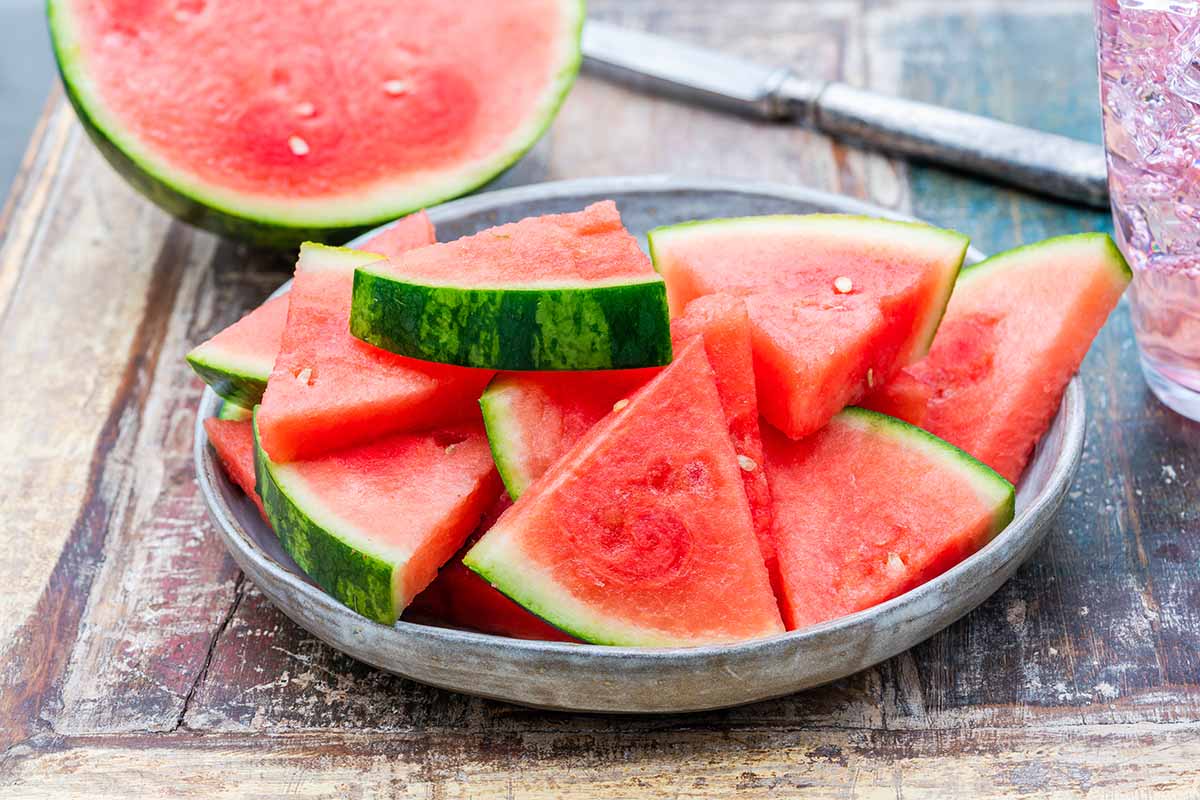Picking up a ripe watermelon from the bin at the grocery store is easy. But when you have to decide on your own whether the big, beautiful fruit you’ve been cultivating is ready to be eaten, it can be a difficult decision.
Unlike many fruits, watermelons do not continue to get sweeter after harvest, so the timing must be perfect.
On a hot summer’s day, you want a perfect slice of sweet, crisp, juicy watermelon. No underripe and green-tasting slices are welcome, and we’re going to pass up any that are overripe and mushy, too.

We link to vendors to help you find relevant products. If you buy from one of our links, we may earn a commission.
Unfortunately, the only time you will truly know for sure whether or not a given melon is ready to eat is the moment you slice it open and take a bite.
So, armed with someone’s advice on how to tell if the watermelon is ripe, you give the fruit a solid thump. Is the resulting noise classified as a dull reverb, a hollow echo, or a deep sound? And which sound really indicates what level of ripeness?
This commonly advised knuckle-rapping method is not foolproof, and even for experienced gardeners, it is very hard to get right.
How else can you make sure you’re not going to be wasting a developing beauty by picking it too soon?
We cover the clues present on the plant and fruit itself below, so you can pick yours at its peak.
Here’s what we’ll talk about:
How to Harvest Watermelons
Time to Maturity
Commercial growers will sample sweetness and ripeness by picking a few random melons throughout the field around the time when they are supposed to be ready.
But if you only have one or two plants and have been babying the few round fruits they’ve produced, waiting for the perfect time to harvest them, you don’t have the luxury – or likely the will – to sacrifice some.

Depending on the variety, watermelons can take 65 to 90 days from sowing to produce ripe fruit. Most take about 32 days after blooming for the fruit to reach its peak.
Check the seed packet to find out how long you should expect to wait to be able to harvest the first melons, and make a note of the date to start checking on your calendar or in your gardening journal.
Unfortunately, basing harvest and ripeness on the number of days elapsed can also prove to be somewhat inaccurate since weather, pollination timing, and a variety of other factors can vary, affecting when a fruit will be perfectly ripe.
So, while counting the days can give you an approximate harvest window, judge each fruit individually by combining a few methods discussed below for a more reliable result.
Field Spot Color
The field spot is the light-colored spot on the underbelly of the melon where it was in contact with the ground, out of the sun’s reach.
A white spot means it is not ready to be enjoyed.

When this spot turns a butter yellow color, the watermelon is ripe! The larger and more yellow the spot is, the longer the melon has been ripening on the vine.
If you determine that it’s not ready after checking the field spot color, make sure to carefully flip the melon back onto the light-colored underbelly, as this area is prone to sunscald.
The field spot clue is handy to know when picking out a melon at the grocery store, too.
Rind Glossiness and Texture
Other visual clues are present on the green rind itself, whether you’re growing a striped or unstriped variety.
If the rind is glossy and smooth, assume it isn’t fully ripe yet. The rind tends to become dull and rougher to the touch when it’s nearing that sweet, colorful stage.

You can also try puncturing the rind with a fingernail: if it’s easy to break through, it isn’t ready to be picked. If you can’t seem to penetrate it with your nail, and the other rind hints described here agree, it is ripe.
Some sources also say that with striped varieties, the green stripes will become darker when ripe. But this is only helpful if you have an unripe melon to compare with.
Plant Indicators
The plant itself presents some clues as to whether the fruit is going to have that classic, cartoonishly perfect deep color, texture, and sweetness inside.

The curly tendril on the main vine closest to the fruit will turn brown and crispy, letting you know the melon is sweet and ready to sink your teeth into.
Similarly, the leaf growing closest to the fruit may turn yellow when the melon is ready to be picked.
How to Harvest
When you’ve decided it’s time to harvest and eat your homegrown watermelon, cut it from the vine, leaving a few inches of stem attached to the fruit.
Don’t twist or pull it off if you hope to get more fruit from the same plant, as this can damage the vine.

After picking, handle it with care to avoid bruising.
Watermelons are best consumed soon after harvest, but you can store what you’ve picked for up to a week at room temperature if necessary.
Do not store watermelon at temperatures under 50°F in the refrigerator, as this can ruin the flavor and texture.
Don’t store it near other fruits either, as watermelons are sensitive to the ripening gas known as ethylene that’s emitted by other fruits like apples and bananas, as well as other types of melons like honeydew and cantaloupe.
Slice of Summer
Every time I’ve grown watermelons, the hardest part is deciding when to pick the tempting fruit, knowing that once it’s severed from the vine, it doesn’t get any tastier with time.

It’s hard to tell if the fruit’s perfect inside until you slice it open, so give yourself the best chance at enjoying a sweet summer treat by using a combination of the clues covered above to determine when to harvest.
The thumping method, popular as it is, has never worked for me. But maybe I don’t have an ear for different percussion sounds.
What method do you use to decide when to pick your watermelons? Let me know in the comments below if I’m not the only one who must rely on visual clues, and who has trouble discerning a hollow sound from a deep one when rapping the rind!
While you’re here, read these guides next to learn more about growing and harvesting melons:
It’s very detailed for me like new Gardners / Farmers 🙂 thank you so much for your effort. All The Best!!
You’re welcome! Very glad the article was helpful. 🙂
You should try the mustard ketchup trick. Place four table spoonfull of mustard and another four of ketchup on the center rind……..do NOT mix the two condiments. If in two days the mustard is dried AND clings to the rind…she’s ready to pick!
Hello, Tom, and I’m glad you shared this intriguing possibility.
I’m sure I’m not the only gardener who would like to know why you feel like this works, and what role the ketchup plays. And would it work with less mustard? Four tablespoons is a quarter of a cup, which seems like a lot.
Looking forward to a further explanation of this folksy idea. Thanks for reading.